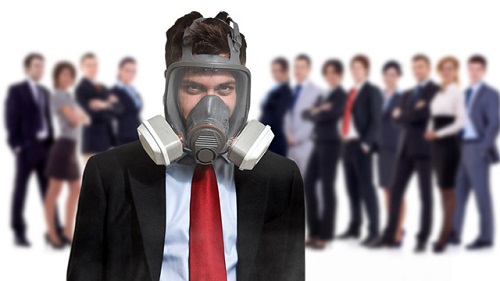Could your organization be toxic? What defines a toxic work environment, and how does it affect a company’s bottom line, employees, and productivity?
A toxic workplace is defined as an unhealthy damaging environment. Harmful behavior can be at all organizational levels. This can cause long-term employee problems ranging from personal health issues to more severe consequences.
Individual Impact
Toxic behavior hurts all employees and undeniably extends to the entire organization in the following ways:
- Decreased job satisfaction
- Physical problems; loss of sleep, an increase or decrease in weight, or high blood pressure
- Depression or paranoia
- Increased stress
- Potential increased use of alcohol or drugs
Organizational Impact
- Increased sick days
- High employee turnover
- Negative talk
- Lack of communication between management and employees
Toxic Signs
However, please know that toxic behaviors can be hard to detect. Employees are often unaware of their unhealthy behaviors. Therefore they may not even know how they are poisoning team efforts. Here are examples of toxic behavior:
- Sighing
- Rolling their eyes
- Snickering
- Crossing their arms
- Avoiding eye contact
- Gossiping
- Assigning unflattering nicknames to co-workers
- Chuckling at another’s input
- Dismissing or ignoring the contributions of others
- Condescending behavior
- Grumbling and complaining
- Sarcasm
- Assigning blame to others
Toxic behaviors in the workplace can cause high stress and low morale among employees. It can cause a lack of communication and loyalty between employees and supervisors, leaving broken relationships at work.
How do you overcome these toxic behaviors?
In his book The Five Dysfunctions of a Team, Patrick Lencioni compares high-performing teams to expert oarsmen.
“If you could get all the people in the organization rowing in the same direction, you could dominate any industry, in any market, against any competition, at any time,” stated Lencioni.
Getting all of your team members rowing in the same direction, let alone in the same boat, can be a difficult, daunting task.
Your organization must have policies and procedures to deal with the issues or behaviors causing or contributing to the toxic workplace. Management must take the necessary steps to enforce these policies.
However, please remember overcoming toxic behaviors in the workplace can be extremely difficult. Employees may resist reporting these behaviors to managers because they don’t want to stir things up and cause more problems for themselves or other employees. An open door policy or anonymous reporting line can help employees speak up about the behaviors they are experiencing or witnessing.
“Leaders need to improve and work toward a better work environment continuously. Leaders can’t just say they are going to do it; they need to initiate the shift and actively work toward change,” stated Tim Dimoff.
Tim Dimoff Can Help You Understand a Toxic Workforce
Timothy Dimoff, based in Akron, Ohio, can help your organization understand how to identify toxic behavior and what to do when unhealthy behavior is exhibited in your organization. Call Tim at 330-730-3524 to schedule his Talk, The Impact of a Toxic Workforce on Your Employees.
Follow Tim on LinkedIn and Twitter for more timely insights.



